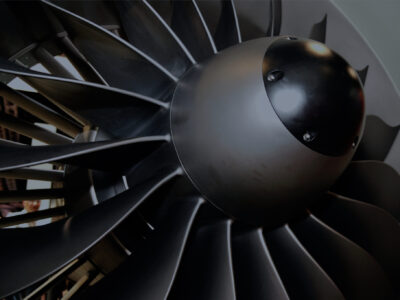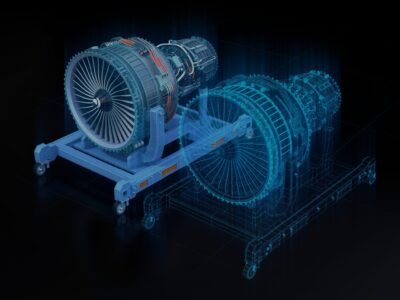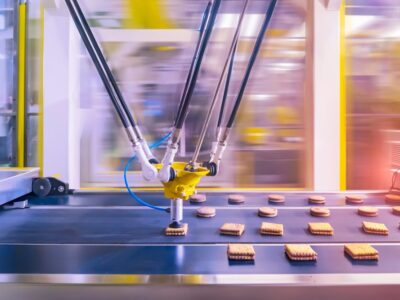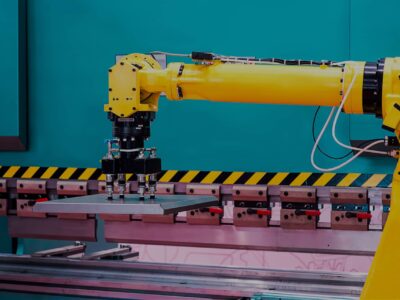Originally published on fastradius.com on June 26, 2020
There are three commonly recognized forms of maintenance: reactive, preventative, and predictive. The simplest form of machine maintenance is a reactive process; when a machine breaks, it’s removed from operations, repaired, and then returned to service as quickly as possible. While this method seemingly maximizes production and machine utilization, it comes with a number of drawbacks — namely, it can result in costly downtime and high repair costs if a significant asset or machine part fails.
In order to avoid prolonged downtime, manufacturers have turned to preventative maintenance practices, which involve performing routine maintenance tasks while equipment is still operating normally in order to reduce the risk of breakdowns.
The premise of preventative maintenance is a theoretical rate of asset failure, which determines when parts should be replaced, even if they have some lifespan remaining. However, manufacturers can minimize the unused lifespan by scheduling regular maintenance based on asset usage and the inventory of replacement parts the manufacturer has on hand at all times. Preventative maintenance is generally more cost-effective than reactive maintenance in the long run, because cost losses associated with downtime and critical part failures are effectively mitigated. Ultimately, preventative maintenance can extend the lifecycle of machines and increase uptime.
While preventative maintenance saves on time and costs, it assumes that parts are replaced before they go bad, meaning they have some residual lifetime. For that reason, a third method has developed termed predictive maintenance, which leverages technology to anticipate and avoid failures and breakdowns before they happen.
An overview of predictive maintenance
Predictive maintenance uses sensor data collected by internet of things (IoT) devices to monitor data and detect potential defects or failures before they cause issues or breakdowns. For instance, sensor data can be processed to analyze oil viscosity and machine vibration, or to analyze thermal imaging to find local hot spots associated with worn components.
By monitoring asset performance in real time, predictive maintenance reduces the frequency of necessary repairs and upkeep — eliminating the need for reactive maintenance — while also avoiding the costs that come with unnecessary or excessive preventive maintenance.
When properly implemented, predictive maintenance can protect a company’s bottom line by minimizing downtime, servicing time, and the costs associated with acquiring additional parts and supplies. One study found that, on average, factories with strong predictive maintenance practices can reduce maintenance costs by 12%, increase uptime by 9%, and extend the lifetime of aging assets by 20%. Furthermore, predictive maintenance often protects the environment — when practiced effectively, it can reduce environmental, health, quality, and safety risks by 14%.
Predictive maintenance and machine learning can also be used in tandem with IoT-enabled maintenance tools to elevate efficiency, although certain asset monitoring techniques and devices can be expensive or require specialized training to properly operate.
Predictive maintenance best practices
The success of the predictive maintenance model depends on a few factors, including approach, execution, and expectations. Here are five guidelines for getting it right.
1. Prioritize business-critical machinery
Manufacturers should start by identifying the machines that are absolutely necessary to business operations and ensure that the maintenance of these assets is prioritized. By focusing on machines and processes that would cause the most significant disruption were they to fail, manufacturers ensure operations can continue undisrupted while protecting costs.
2. Use real-time data collection
Manufacturers should take advantage of the range of capabilities afforded by the IoT. By gathering real-time data, IoT sensors can create an archive of maintenance records and individual machine histories, which helps track performance over time.
IoT sensors provide insight into a range of different machine conditions with far greater speed and accuracy than can be achieved manually. These include conditions like output quality and power usage, and can even extend to observation about the asset’s general wear and tear.
3. Do timely data analysis
Data analysis allows maintenance personnel to understand how each asset individually contributes to overall output, performance, and uptime. This data can be used to identify and repair or replace assets before they fail, or to correct machine output before its performance deviates from accepted tolerances. And while it may seem like common sense, maintaining a regular data collection and analysis practice is key to preventing the likelihood of unexpected equipment failures and costly downtime.
4. Make data-driven decisions
Based on the data analysis, maintenance personnel can then take the necessary actions to prevent machine failure or breakdown. However, it’s also important to monitor the results of these actions. If the asset that has been serviced continues to underperform, this could be indicative of further issues.
It is also advantageous to document the successes of these practices, as they can be used to demonstrate the cost-effectiveness and ROI of the predictive maintenance program.
5. Provide ongoing support
Predictive maintenance programs require continuous support to remain effective. As companies scale, predictive maintenance approaches should adjust accordingly to continue supporting the business’s operational needs. This could come in the form of expanding monitoring capabilities, augmenting training initiatives, or refining maintenance approaches to take factors like humidity and temperature into consideration when evaluating machine performance. A successful predictive maintenance program is dynamic and adaptive, which allows it to serve the needs of the business most effectively.
Streamlining the maintenance lifecycle
It’s hard to overstate the value of predictive maintenance. By using the speed and flexibility of predictive analytics and the IoT, manufacturers can leverage real-time machine performance data to prevent potential failures, downtime, and cost losses down the line. The process fortifies the business’ bottom line and provides a range of other benefits — including improved environmentalism and safety and extending the life of integral parts and machines.
At SyBridge, we’re committed to innovation and continuous improvement. We take pride in working closely with each customer throughout the manufacturing and production processes, ensuring that every order is optimized for design, lead time, efficiency, and cost. We’re confident you’ll see the difference. Contact us today if you’re ready to get started.






